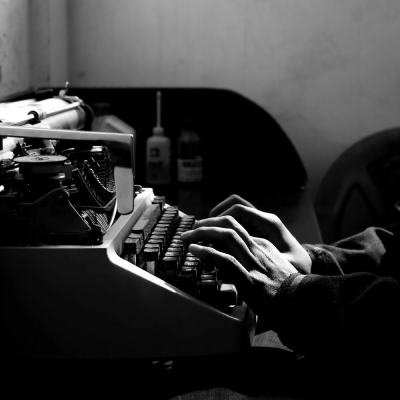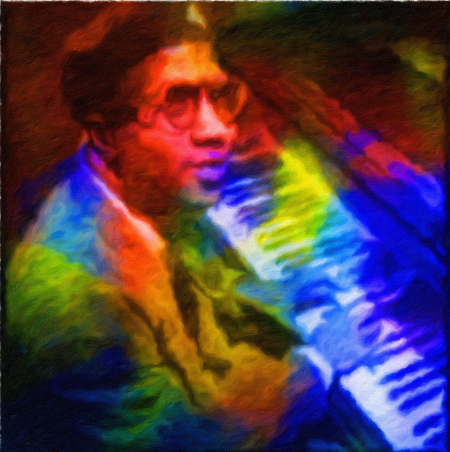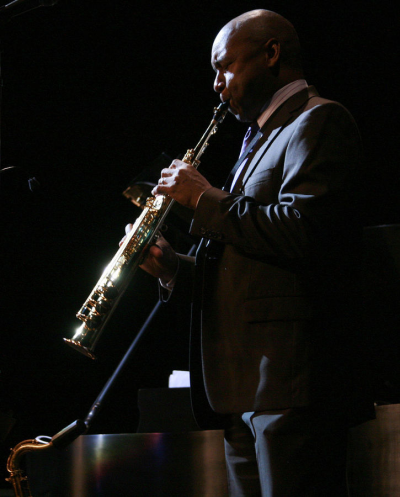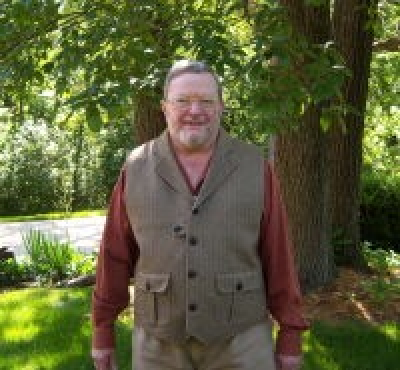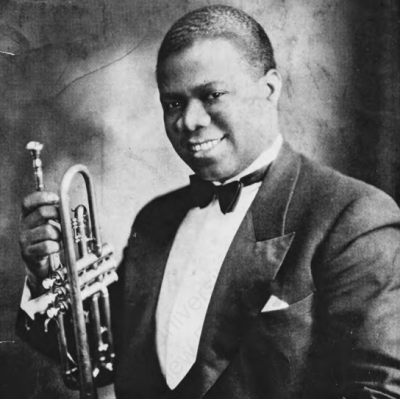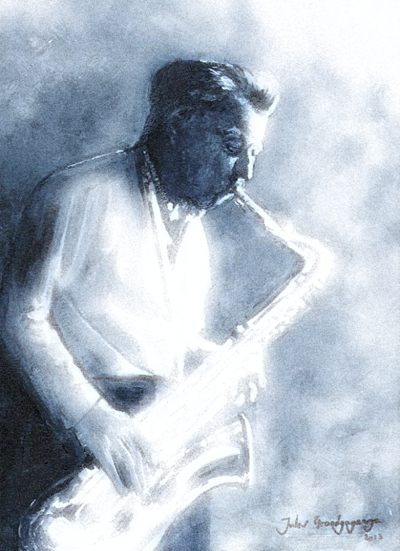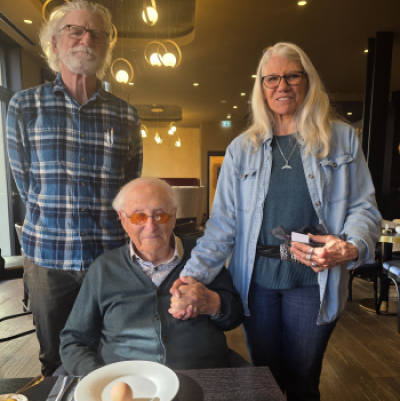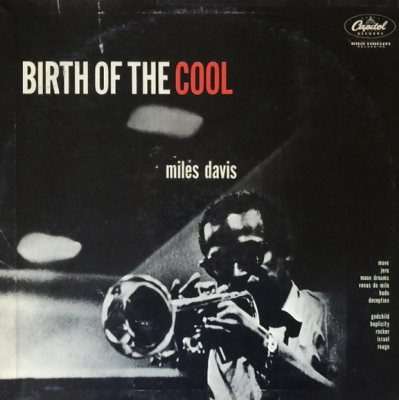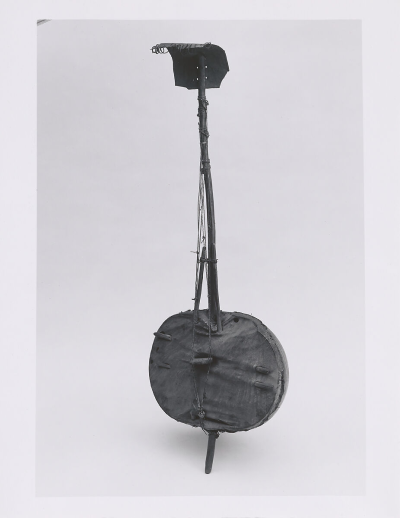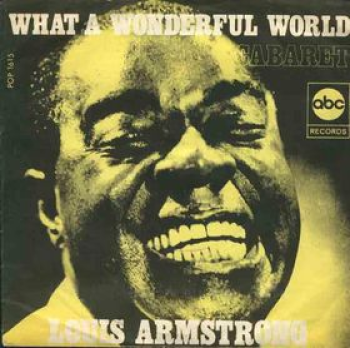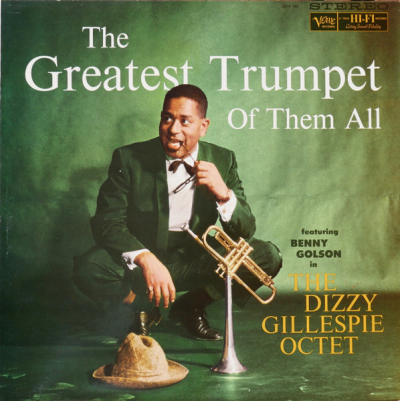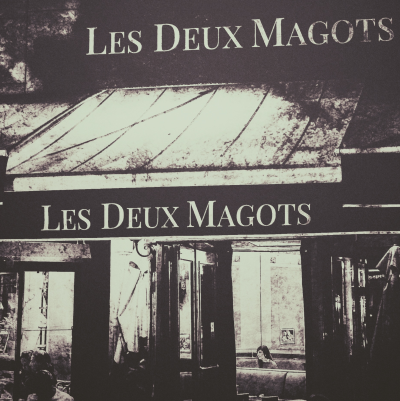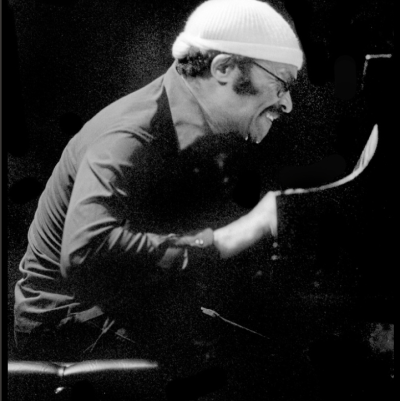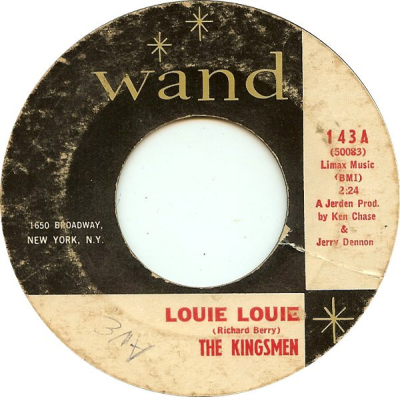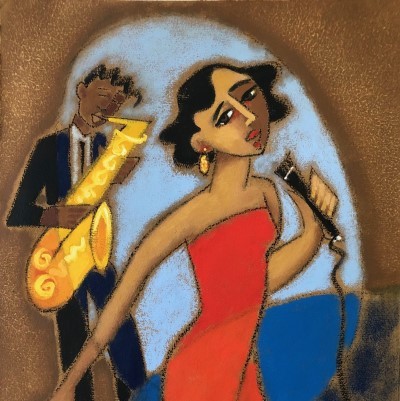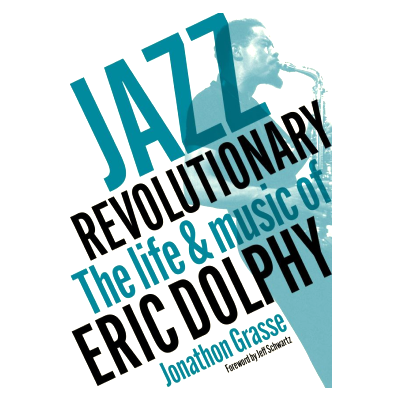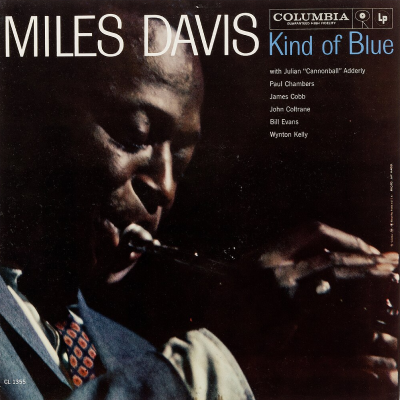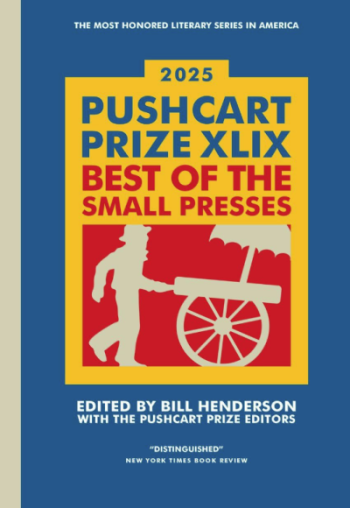.
.
For over twenty years, publishing quality jazz-themed fiction has been a mission of Jerry Jazz Musician. Hundreds of short stories have appeared on the pages of this website, most all of which can be accessed by clicking here.
A substantial number of novels and stories with jazz music as a component of the story have been published over the years, and the scholar David J. Rife has written short essay/reviews of them, which he has compiled in two valuable resources, Jazz Fiction: A History and Comprehensive Reader’s Guide (2008), and a recently published sequel, Jazz Fiction: Take Two. (Several of the stories published on Jerry Jazz Musician are reviewed).
Rife’s work is impressive and worth sharing with Jerry Jazz Musician readers. With his cooperation, essay/review excerpts from Take Two will be published on a regular basis.
.
In this edition, Rife writes about the “queering” of jazz fiction, examples of which are described in the five books/short stories he reviews.
.
.
___
.
.
.
…..Jazz Fiction: Take Two is the sequel to Jazz Fiction: A History and Comprehensive Reader’s Guide (2008). The earlier work filled a pressing need in jazz studies by identifying and discussing 700 works of fiction with a jazz component.
…..This work picks up where that one left off, around the turn of the 21st century, and surveys over 500 works of jazz-inflected fiction that have appeared since. None of these works, to my knowledge, have been discussed in this context.
…..The essay-reviews at the center of the book are designed to give readers a sense of the plots of the works in question and to characterize their debt to jazz. The entries were written with both the general reader and the scholar in mind and are intended to entertain as well as inform. This alone should qualify Jazz Fiction: Take Two as an unusual and useful reference resource.
.
-David J. Rife
.
.
___
.
.
Photo on the cover of Jazz Baby, by Roland Graeme
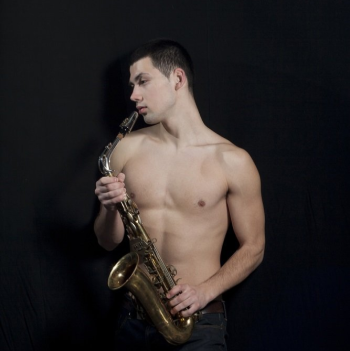
.
The “Queering” of Jazz Fiction
….. My title is not so much to pander to prurient curiosity as to announce that the music that had promoted a mucho macho image for over a century has slowly broadened its perspective. Oh, there were rumors over the years—aren’t there always?—that some of the guys were playing on the other team, and indeed exceptions were very occasionally made, especially when the person in question was so laidback, gifted, and indispensable that his talent obviated any question regarding his sexual preferences. By now everyone knows the story of Billy Strayhorn and no one cares that he was flamboyantly gay, just as no one blinks today to hear one man introduce another as his husband. It’s not surprising that several jazz musicians have “come out” in recent years and that jazz fiction reflects this.
….. Two serious works, by ranking writers, heralded this change at the end of the last century (and are thus discussed in my earlier book Jazz Fiction: A History . . .). Jackie Kay’s Trumpet tells the story of a female jazz artist who masqueraded as a man for many years, during which he was happily married and father to an adopted child. Incredibly, this novel is based on the real-life experience of jazzman Billy Tipton, who was several times married and father of adopted children. Another surprising novel based on actual events is John A. Williams’ Clifford’s Blues, a story recounting the experience of a gay Black American jazz pianist who was incarcerated in Dachau during Hitler’s reign. The recent works listed below also center on gay male experience. Please be warned that the first two entries contain uncommonly graphic sexual depictions, while the last two are relatively conventional. The middle work contains little music but adds depth to the familiarly complicated theme of the homosexual family man.
.
.
___
.
..
…
…..The cover photo features a buff young man naked to the waist gently caressing a saxophone. Indeed, the novel’s two main characters are jazz saxophonists, one a pro, the other studying the craft at Juilliard. They meet when young virgin Keith comes to the Big Apple from Hicksville to explore its gay and jazz scenes. The older Paul becomes his enthusiastic guide, mentor, and lover. The story incorporates a couple of generic scenes in a jazz club, and later Keith starts to take his instrument(s) to open mic nights—more to attract beautiful young guys than to hone his skill. As he develops his expertise (so we’re told), Keith feels the need to upgrade his horn, so Paul takes him shopping and encourages him to buy a completely refurbished Strasser Marigaux, the better to complement his own treasured Couesnon. The boys soon begin playing hot duets at home on their exquisite French instruments. But make no mistake: this book would better be titled Gay Life for Dummies for the way it describes, in graphic detail, how to cruise, participate in orgies, enjoy sex in public toilets and bathhouses, and use the saxophone mouthpiece to soften the lips.
.
.
_____
.
.
..
Cam Williams is a gifted, half-Black 19-year-old musician who had attended Baltimore’s performing arts school on scholarship and is now pondering his next step toward a musical career. Enter a fairy godfather, Smallwood, an elegant middle-aged gentleman with serious connections in the music worlds of Philadelphia and New York; he is in fact conductor of the Queer Urban Orchestra of Manhattan. After the two hook up, in graphic detail, Smallwood offers to help Cam realize his aspirations. But Cam rejects the offer on the grounds that he wants to succeed—or fail—on his musical talent, not just on his prodigious sexual prowess. Soon after this encounter, Cam is playing piano and singing at his night job at a boutique hotel gay bar. After playing some serious jazz (interspersed with Nat King Cole signature tunes), Cam is asked to play “Footprints” by another elegant middle-aged gentleman, who turns out to be a music producer. He, too, after an intense bout in bed with the handsome young Cam, offers to help him gain a foothold in the jazz industry. Again, Cam demurs. He is a person of integrity and insists on determining his own destiny. Which is exactly what he’s doing at the end when he successfully auditions for a place as accompanist with the Philadelphia Jazz Orchestra after his performance of “Yardbird Suite.” The jazz references in this short graphic story are frequent but superficial.
.
.
_____
.
.
..….It’s 1979 and two American TV journalists are in Shanghai working on a story on post-Mao era China. As they drink and listen to music, the speaker—the much older of the two, and a closeted gay—worries over how he can continue his relationship with his young lover while posing as a respectable family man back home in the Midwest. The background music and the seedy bar itself don’t provide much hope—or jazz, for that matter.
.
.
_____
.
.
…..….Taking place during the mid-1920s in two of the most exciting and glittering places on earth at the time—Harlem and Paris—Jazz Moon dramatizes the challenges faced by aspiring poet Ben Charles as he struggles to master his art and achieve selfhood, a selfhood that is centrally dependent on his coming to terms with his homosexuality. Yes, yet another Portrait of the Artist as a Young Man. The arts are ingrained in the narrative, and the folks on the scene embrace it with enthusiasm. The opening sentences nicely capture the exuberance of the time and place:
Harlem had been hit by a hurricane. It was raining cats and jazz. White folks called it race music. Old colored folks branded it the devil’s music because its saucy beats made men pump their hips in slow pirouettes and women lift their skirts above the knee with a sweltering look that said come and get it, papa. But, whatever you called it, it was everywhere. Gliding out of glossy nightclubs; smoking lush and torrid out of basement speakeasies; in the streets, louder than a growling subway train. And if you ventured down Lenox Avenue or 125th Street, you wouldn’t be surprised to pass a first-floor apartment, window open, and glimpse a couple dancing as jazz crackled out of a phonograph.
…..A recent arrival from the south, Ben is smitten by the hottest trumpeter in town, Baby Back, another southerner, and soon abandons his devoted wife to hook up with the charismatic musician. The two young men soon make their way to Paris, where opportunity awaits American Blacks, especially Harlemites, because of their exotic appeal. When the couple, inevitably, break up, Ben takes to the gutter and becomes promiscuous, seeking release from his suffering in the shadowy underbelly of Paris. But, as in a fairy tale, love, in the guise of a handsome young French artist, seeks out Ben. At the end their chances seem good to overcome the obstacles that stand in the way of creative people, especially gay ones. This jazz-drenched, highly romantic love story has much to say about race, art, and the gay experience.
.
.
_____
.
.
.,,,,,…..Rufus Gardner V is a pudgy nerd with neither interest nor instinct for sports. But his father intimidates him to learn to hit a baseball and promises to send him to Ole Miss if he promises to try out for the team. As a player he’s a joke, but he can hit so he earns a position as benchwarmer. Then, at a crucial moment in an important game, he’s called upon to pinch hit and has his Jack Armstrong moment: a game-winning homer. Rufus graduates, takes a job at the bank, and settles into a prosaic existence. Then he’s sent to New York on a business trip and his life is irrevocably changed. After his seminars and a late dinner, he overhears music emanating from the Five Spot, a lounge in the Bowery; the piano in particular is like a magnet to him, so he bellies up to the bar and soon finds himself—a southern white boy in 1957—transfixed by the sounds of Thelonious Monk. When Monk does one of his characteristic dances, Rufus joins him, and then when he returns to his seat he’s joined by a small, dapper Black man (transparently modeled on James Baldwin) who, by and by, kisses Rufus on the lips. In one short evening Rufus undergoes both a racial and sexual awakening—and he’s comfortable with himself and happy for the experience. As he says, “I was emancipated by the music of Thelonious Monk.” Not incidentally, one of the story’s dedicatees is Monk’s patron Baroness Pannonica de Koenigswarter.
.
_____
.
.
Click here to read previous editions of excerpts from David J. Rife’s Jazz Fiction: Take Two
.
.
Click here to read “Bluesette,” Salvatore Difalco’s winning story in the 67th Jerry Jazz Musician Short Fiction Contest
Click here to read more short fiction published on Jerry Jazz Musician
Click here to read The Sunday Poem
Click here for information about how to submit your poetry or short fiction
Click here for details about the upcoming 68th Jerry Jazz Musician Short Fiction Contest
Click here to subscribe to the Jerry Jazz Musician quarterly newsletter (it’s free)
.
Click here to help support the continuing publication of Jerry Jazz Musician, and to keep it ad and commercial-free (thank you!)
.
.
___
.
.
Jerry Jazz Musician…human produced (and AI-free) since 1999
.
.
.</p







